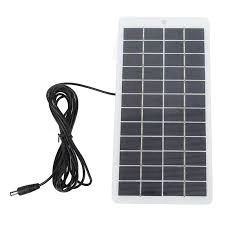Comparing Bifacial and Monofacial Solar Panels for Optimal Energy Efficiency
Bifacial vs. Monofacial Solar Panels A Comparative Analysis
Solar energy has become a pivotal component in the race to achieve sustainable and clean energy solutions, catalyzing advancements in solar technology. Among these innovations, bifacial and monofacial solar panels are two prominent options available for harnessing solar power. Understanding their differences is crucial for homeowners, businesses, and investors who seek to maximize the benefits of solar energy. This article aims to provide a detailed comparison of bifacial and monofacial solar panels, highlighting their characteristics, advantages, disadvantages, and applications.
What Are Bifacial and Monofacial Solar Panels?
Monofacial solar panels are the traditional type of solar panels that generate electricity from one side, typically the front side where the solar cells are exposed to sunlight. The back side is usually covered with a protective layer, which may not be designed to capture sunlight.
Bifacial solar panels, on the other hand, have solar cells on both sides. This design allows them to capture sunlight from both the front and rear ends. Moreover, bifacial panels can make use of albedo effect—the reflection of sunlight off surfaces like snow, sand, or concrete—thus enhancing their energy production by utilizing reflected light.
Energy Efficiency and Power Generation
When it comes to energy efficiency, bifacial solar panels generally have the upper hand. Studies indicate that bifacial panels can produce 10% to 20% more energy than monofacial panels under optimal conditions. This increased efficiency results from their ability to utilize the reflected sunlight from the ground and surrounding surfaces.
However, the actual performance of bifacial panels highly depends on the installation conditions, such as the height of the mounting, the angle of installation, and the reflective properties of the ground surface beneath them. If installed in a setting with low albedo reflectivity, the advantage of bifacial panels diminishes.
In contrast, while monofacial panels may produce less energy overall, their performance is relatively predictable and consistent. They may be a more straightforward solution for areas with less reflective ground surfaces.
Cost Considerations and Return on Investment
bifacial vs monofacial

The cost of solar panel systems is a critical factor for most installations. Generally, bifacial solar panels come at a premium compared to their monofacial counterparts due to their advanced technology and additional materials needed for construction. However, the potential for higher energy production can lead to a faster return on investment if the system is designed and installed correctly.
Moreover, the levelized cost of energy (LCOE) often favors bifacial panels in well-optimized environments—especially in large-scale solar farms—where the benefits of increased output justify the additional upfront expenses. Conversely, monofacial panels might be more economical for smaller installations or homes with limited roof space and less complex setups.
Durability and Longevity
When durability is concerned, both bifacial and monofacial panels are designed to withstand harsh environmental conditions. However, bifacial panels can sometimes be more durable due to their glass-on-glass construction, which provides additional protection against micro-cracks and environmental stress.
In terms of lifespan, both types of panels typically come with warranties ranging from 25 to 30 years. However, the actual longevity may vary based on the quality of manufacturing and installation, as well as the local climate conditions.
Applications and Suitability
The choice between bifacial and monofacial panels often comes down to the specific application and installation environment. Bifacial panels are ideally suited for large-scale solar installations, open fields, and commercial projects where maximized energy production is crucial. They perform exceptionally well in areas with high albedo surfaces, such as deserts or snowy regions.
Monofacial panels, on the other hand, are often preferred in residential installations and smaller projects where space and budget constraints exist. Their predictability and easier installation process can be beneficial for homeowners who are looking for a simpler solar solution.
Conclusion
In conclusion, both bifacial and monofacial solar panels have unique advantages and disadvantages. Bifacial panels offer higher energy efficiency and adaptability to certain environments, while monofacial panels provide a more straightforward and cost-effective solution for many residential applications. Ultimately, selecting the right type of solar panel depends on factors such as site conditions, budget, and specific energy needs. With the continued advancements in solar technology, both types will likely evolve, further enhancing their efficiency and applicability in the renewable energy landscape.
-
Unlocking Energy Freedom with the Off Grid Solar InverterNewsJun.06,2025
-
Unlock More Solar Power with a High-Efficiency Bifacial Solar PanelNewsJun.06,2025
-
Power Your Future with High-Efficiency Monocrystalline Solar PanelsNewsJun.06,2025
-
Next-Gen Solar Power Starts with Micro Solar InvertersNewsJun.06,2025
-
Harnessing Peak Efficiency with the On Grid Solar InverterNewsJun.06,2025
-
Discover Unmatched Efficiency with the Latest String Solar InverterNewsJun.06,2025







